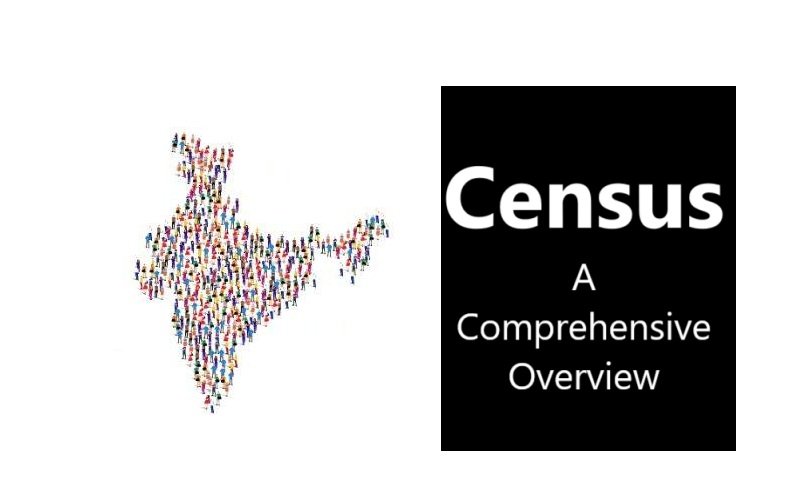
A census is a systematic process of collecting, analyzing, and disseminating demographic, social, and economic data about a country’s population. It is one of the most crucial tools for governance, planning, and development, offering insights into the structure and dynamics of a society. This article delves into the history, process, significance, challenges, and global practices associated with the census.
What is a Census?
The term “census” refers to a complete enumeration of a population at a specific point in time. It is conducted periodically, usually every ten years, and provides detailed information on various aspects of a population, including its size, composition, distribution, and socio-economic characteristics.
The Importance of a Census
- Policy Making: Census data is fundamental for designing and implementing policies related to education, healthcare, housing, and employment.
- Resource Allocation: Governments use census data to allocate resources equitably among regions and populations based on their needs.
- Electoral Processes: In many democracies, census data is essential for delimitation of electoral boundaries and ensuring fair representation.
- Economic Planning: The data aids in identifying economic disparities and planning strategies to promote balanced economic development.
- Monitoring Progress: It helps track progress in achieving development goals such as poverty reduction, literacy improvement, and healthcare access.
The Census Process
The census process involves several stages to ensure accuracy and reliability. These stages include:
1. Planning
Extensive planning is required to define the scope, objectives, and methodology of the census. This includes designing questionnaires, training enumerators, and setting up data collection systems.
2. Data Collection
Data collection is carried out through various methods, such as:
- Household Surveys: Enumerators visit homes to gather data directly from residents.
- Self-Enumeration: Respondents fill out census forms on their own, often online.
- Administrative Records: In some cases, administrative databases are used to complement census data.
3. Data Processing
The collected data is processed and analyzed using advanced software and statistical techniques. This involves data cleaning, coding, and tabulation.
4. Dissemination
Census results are published in the form of reports, tables, and datasets, making them accessible to policymakers, researchers, and the public.
Read this: Why BHARAT (INDIA) Uses ‘Union of States’ Instead of a ‘Federation’
History of Census
Global History
Censuses have been conducted since ancient times. Notable examples include:
- Babylon (3800 BCE): Early records show population counts for taxation purposes.
- Roman Empire (6 CE): The Roman census was used to determine taxes and military service.
- China (2 CE): The Han dynasty conducted one of the earliest known comprehensive censuses.
Census in India
India has a long history of census-taking, dating back to the Mauryan Empire (321–185 BCE). However, the modern census began in:
- 1872: The first non-synchronous census under British rule.
- 1881: The first synchronous and systematic census, conducted every ten years since then.
The latest census, conducted in 2011, was the 15th National Census of India.
Challenges in Conducting a Census
- Logistical Complexity: Conducting a census in large and diverse countries involves immense logistical challenges, from recruiting enumerators to reaching remote areas.
- Data Accuracy: Ensuring data accuracy is difficult, especially in areas with high migration, illiteracy, or distrust of authorities.
- Privacy Concerns: People may be reluctant to share personal information due to concerns about privacy and misuse of data.
- Cost: Census operations are expensive, requiring significant financial and human resources.
- Technological Barriers: In some regions, lack of access to technology can hinder modern data collection methods like online surveys.
Census in India: The Process
India’s census is conducted by the Office of the Registrar General and Census Commissioner under the Ministry of Home Affairs. It follows a two-phase approach:
- House Listing: This phase involves collecting information about housing and household amenities.
- Population Enumeration: This phase captures demographic and socio-economic data about individuals.
Census and Its Impact
1. Governance and Planning
Governments use census data to:
- Plan infrastructure projects like schools, hospitals, and roads.
- Allocate funds to states and local bodies based on population size and needs.
2. Social Development
Census data helps identify underprivileged groups, enabling targeted interventions in education, health, and employment.
3. Economic Development
The data is crucial for analyzing labor market trends, determining workforce participation, and identifying areas for industrial growth.
4. Research and Academia
Census data provides a wealth of information for researchers, enabling studies on population dynamics, migration, and socio-economic trends.
Global Practices in Census
- United States: The U.S. Census is conducted every 10 years by the Census Bureau. It employs advanced technology, including online surveys and Geographic Information Systems (GIS).
- Canada: Canada conducts a census every five years, focusing on demographic and socio-economic data.
- United Kingdom: The UK Census is conducted by the Office for National Statistics and includes detailed questions about housing, employment, and ethnicity.
- China: China conducts its national census every 10 years, with the latest one in 2020, involving over 7 million enumerators.
Future of Census
With advancements in technology, the future of census-taking is likely to involve:
- Digital Census: Increased use of online data collection to improve efficiency and reduce costs.
- Real-Time Data: Integration with administrative records for real-time population data.
- Use of AI and Big Data: Leveraging artificial intelligence and big data analytics to enhance data accuracy and insights.
- Enhanced Privacy Measures: Implementing robust data protection mechanisms to address privacy concerns.
Conclusion
The census is an indispensable tool for understanding and shaping societies. Despite its challenges, it remains a cornerstone of effective governance and development planning. As technology evolves, the census process is expected to become more efficient, inclusive, and insightful, further enhancing its role in building equitable and prosperous societies.





